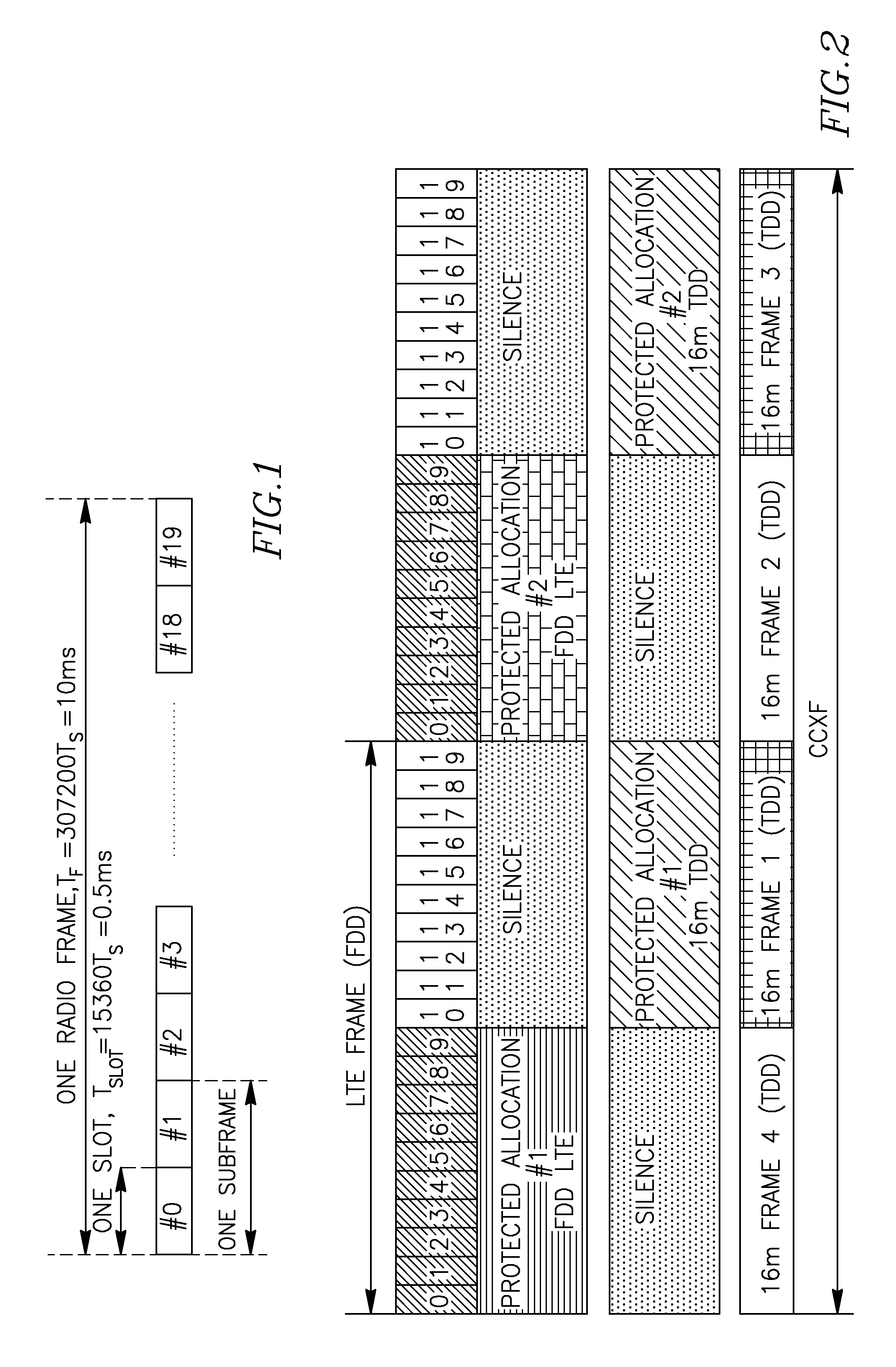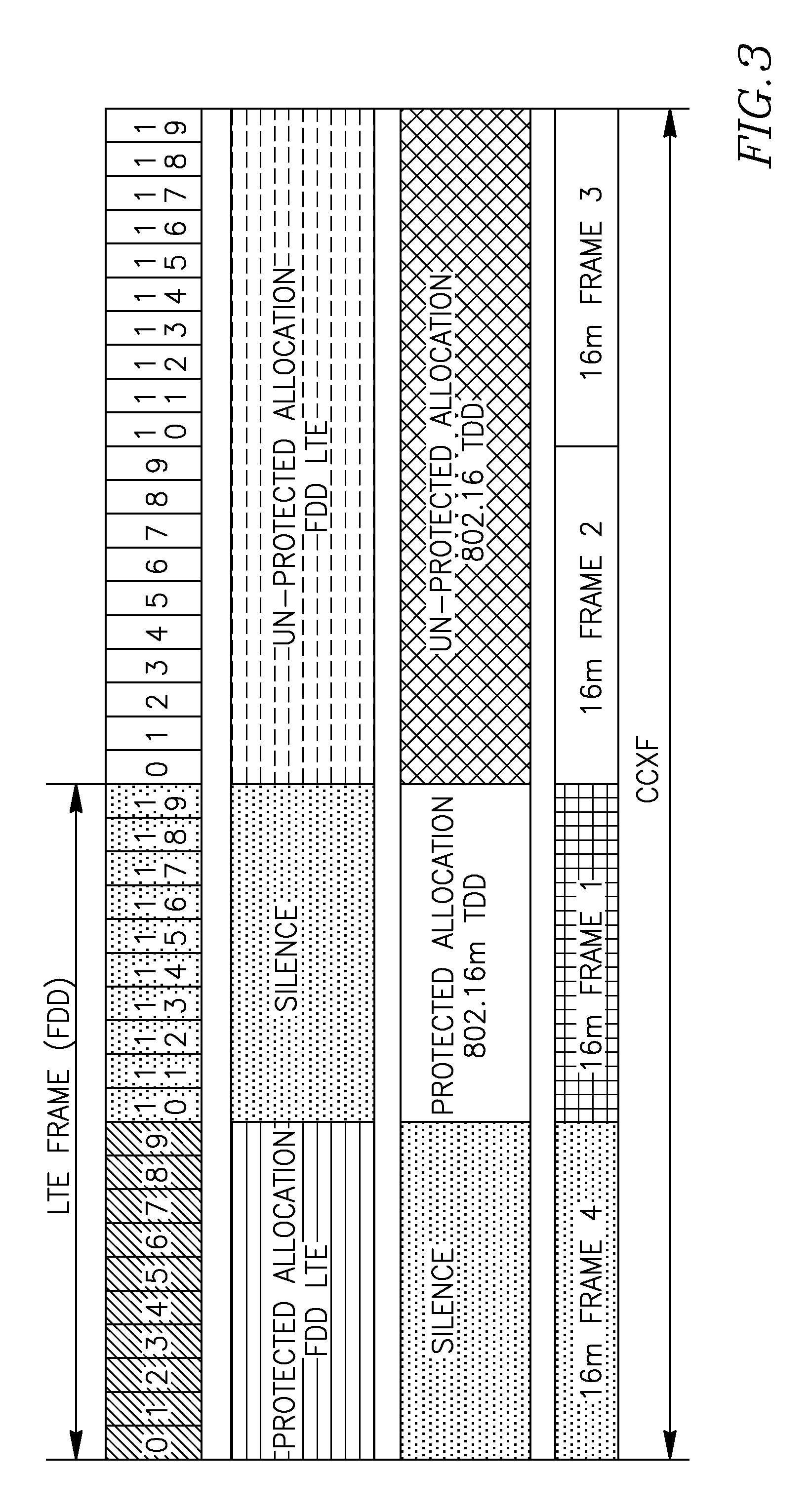Method for improving coexistence between adjacent TDD and fdd wireless networks
- Summary
- Abstract
- Description
- Claims
- Application Information
AI Technical Summary
Benefits of technology
Problems solved by technology
Method used
Image
Examples
example
WiFi Synchronization with CCXF Based on Cognitive CXCF Information
[0091]After establishing the timing of one CCXF protected allocation, an un-synchronized WiFi BS / AP will be able to synchronize its operation with CXCF. An unsynchronized BS may also use the time-shift of its protected scheduling in order to find a best timing match for operating with reduced interference.
[0092]A special case is represented by the radio devices providing simultaneous radio services using adjacent frequency bands (collocated radio coexistence). Such a device may be connected to a synchronized BS which is aware of the CXCF structure at that specific location. If we suppose that in an adjacent frequency band operates a WiFi AP (Access Point) to which is connected the dual-mode device, this device can inform the AP about the timing of the CXCF and the timing of the protected allocations for WiFi operation.
[0093]WiFi can also detect the periodicity of the harmful interference. If a well known CXCF is defin...
PUM
 Login to View More
Login to View More Abstract
Description
Claims
Application Information
 Login to View More
Login to View More - R&D
- Intellectual Property
- Life Sciences
- Materials
- Tech Scout
- Unparalleled Data Quality
- Higher Quality Content
- 60% Fewer Hallucinations
Browse by: Latest US Patents, China's latest patents, Technical Efficacy Thesaurus, Application Domain, Technology Topic, Popular Technical Reports.
© 2025 PatSnap. All rights reserved.Legal|Privacy policy|Modern Slavery Act Transparency Statement|Sitemap|About US| Contact US: help@patsnap.com



